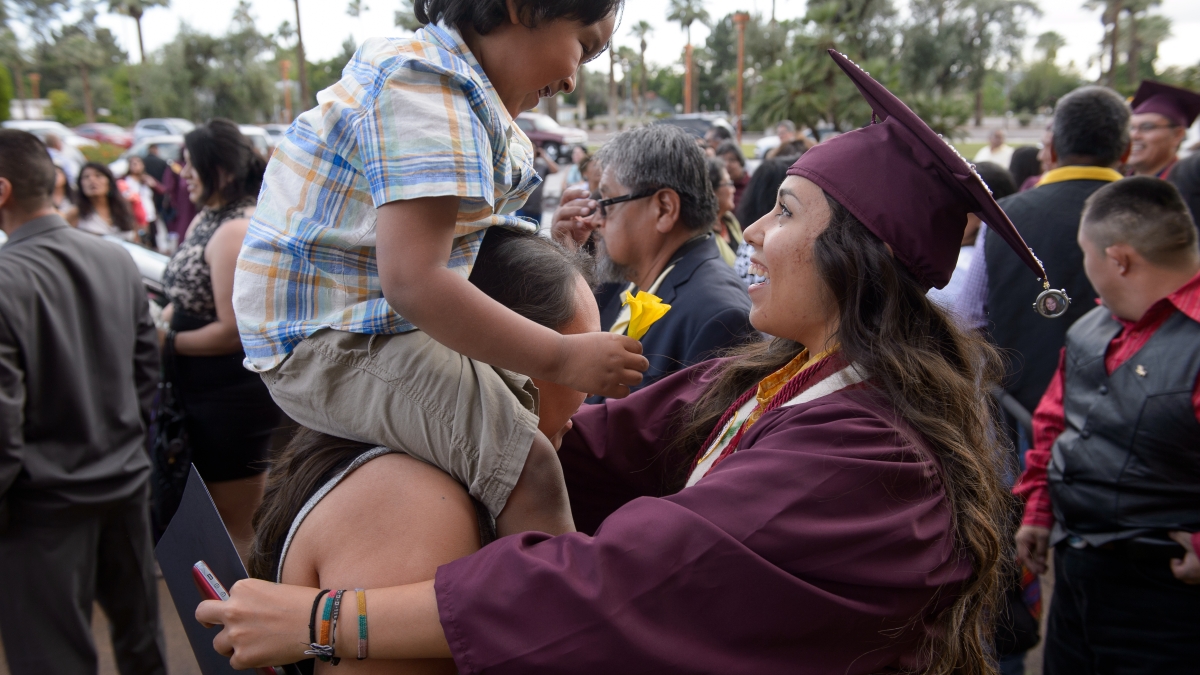American Indian graduates work to give back to tribes


Native American graduates carry an extra responsibility: As a group they overwhelmingly feel a need to give back to their tribes.
That’s what approximately 365 ASU students who identified themselves as American Indians vowed in a purpose statement as freshman and hope to deliver as they received their diplomas on May 15 at Gammage Auditorium in Tempe.
“One of the main things American Indian students talk about why we go to school in the first place is to get educated so we can bring back our communities,” said Naomi Tom, who was the keynote speaker at the spring 2015 American Indian Convocation. “There’s a certain sense of pride when you go back and contribute.”
Hosted by ASU’s American Indian Student Support Services, the event is the 25th anniversary of ASU's American Indian Convocation. Fifty-nine tribes were represented at the convocation.
Tom, who received her Master's of Science in American Indian Studies with a concentration on indigenous rights and social justice, is one of 2,419 American Indian students who attend ASU. Those numbers puts ASU among the top universities in the world with the largest American Indian student populations.
The 31-year-old says she will return to the Tohono O’odham Nation, a population of approximately 25,000 people, near the Arizona-Mexico border. She said she has already accepted a job offer in administration at the Desert Diamond Casino and is looking forward to returning to her tribe after three years of intensive study.
The newly elected Navajo Nation President Russell Begaye, one of several tribal leaders in attendance at the convocation, said a paradigm shift is taking place among several nations and need more American Indian graduates to fill leadership roles.
“We need professional CPAs, bankers, farmers, architects, chemists, lawyers, judges, attorneys, doctors and health officials and educators to help us build some of these programs,” Begaye said. “There are a lot of challenges before us, but there are opportunities for them if they come back. Our message to them is, ‘We have a place for you.’ ”
Begaye said approximately 320,000 people identify themselves as Navajos and that the nation, which is roughly the size of West Virginia, is entering a new era of economic prosperity and independence.
Those numbers and the message Begaye brings to students is music to the ears of Petersen Zah, the first Navajo president and the last chairman of the Navajo Nation, and special adviser to ASU President Michael M. Crow on American Indian affairs.
When Zah graduated from ASU in 1963, there were only about a dozen Native American students. He was charged by former ASU President Lattie Coor to look for innovative ways to increase the numbers of Native students at ASU, which numbered 672 in 1995. Twenty years later, Zah says he is pleased those numbers have nearly quadrupled.
“You can talk all you want about commitment or wishful thinking, but numbers don’t lie,” Zah said. “Numbers mean a lot, and so I’m very proud of that.”